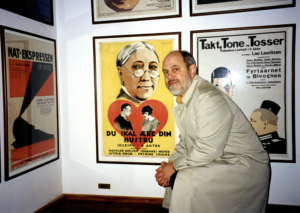
The inscription in David Bordwell’s titanic On the History of Film Style dedicates the book to la combriccola di Pordenone, loosely translated as “the gang at Pordenone.” The acknowledgements elaborate on the debt, when Bordwell credits those behind the venerable silent film festival for “opening my eyes to the splendors of early film.” But Bordwell was scarcely a neophyte when it came to understanding the complexities of early cinema and explaining same to his readership. If we tend not to think of David Bordwell as an early film expert it is only because his expertise cut such a broad and imposing swath across the film studies landscape. With books on topics extending from contemporary film theory to Hong Kong cinema to the careers of iconoclastic directors such as Ozu and Eisenstein, it would be both inaccurate and limiting to box Bordwell into any one area of specialisation. Instead, I will simply argue that his achievements in early film study commend him as one of our most discerning historians of the period. By virtue of numerous articles and blog posts, in addition to significant portions of the aforementioned book on film style, and a follow-up of sorts, Figures Traced in Light, he earned a pre-eminent place in the pantheon of scholars who have reshaped how we view the earliest years of the medium’s development. Some of those, like Lea Jacobs and Ben Brewster, were his colleagues, and, in one significant case, his partner Kristin Thompson, a frequent collaborator.
Part of the reason that Bordwell appreciated early cinema is that he could see the merits in every aspect of filmic expression. But that assessment ignores the acuity of thought and the analytic precision Bordwell brought to bear on works from the early years. Even more bracingly, he was not afraid to challenge widely held assumptions about the significance of the unique stylistic achievements on offer prior to the classical period. This led him to engage in numerous debates about whether early cinema heralded the advent of a type of visuality inherent to modernity. Similarly, it prompted him to argue for a re-evaluation of Griffith as exemplary of the transitional period, and to give renewed attention to the importance of staging in depth even when most scholars of the period placed much more emphasis on the role of editing. Bordwell was ever alert to the possibilities of films not yet sufficiently recognized, or tendencies inadequately analysed. In fact, he had been working up arguments about early-stage American features from the 1910s as one of his more recent projects.
The loss of David Bordwell has resonated so deeply not only because of all the insightful and carefully wrought scholarly work now lost to us. It is also because of his generosity (evident in that inscription honouring Pordenone) and his puckish humour (visible in the attached photograph). I daresay we will not see his like again anytime soon, and we are all the poorer for it. Grazie e addio, David.
—Charlie Keil
